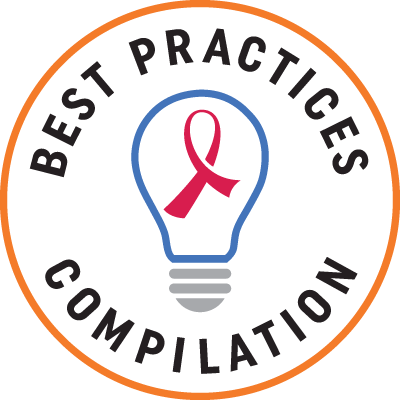Part F - SPNS Models of Care
On
The Special Projects of National Significance (SPNS) of HRSA's Ryan White HIV/AIDS Program (RWHAP) carry out research and evaluation in order to identify models of HIV/AIDS care that can then be adopted by other HIV/AIDS programs. SPNS focuses on various issues under multi-year initiatives that typically include a limited number of project sites and a national evaluation center to coordinate investigations.
- Review the comprehensive directory of SPNS-derived resources, grouped by SPNS initiative.
Best Practices
- SPNS Black MSM Initiative
- Center for Innovation and Engagement
- IHIP
- IHIP
Website
- HRSA HIV/AIDS Bureau (HAB)
Technical Assistance
 SPNS initiative on development of housing-related intervention strategies for three populations with HIV experiencing unstable housing: LGBTQ+; people ages 13-24); and people who have been justice involved. Project period: 2022-2025.
SPNS initiative on development of housing-related intervention strategies for three populations with HIV experiencing unstable housing: LGBTQ+; people ages 13-24); and people who have been justice involved. Project period: 2022-2025.- The ALAI UP Project will support the implementation and delivery of LAI ART at eight demonstration sites in EHE jurisdictions across the US providing care to underserved populations and communities of color.
- SPNS project evaluating interventions that seek to improve the well-being of RWHAP clients 50 and older. Project period: 2022-2025.
- Design, implementation, and evaluation of bundled evidence–informed interventions for Black women with HIV. Project period: 2020-2024.
Help with HRSA Electronic Handbooks (EHB) - 877-464-4772 - 8am-8pm ET, M-F - Contact HRSA About the EHB
Adaptation of HRSA HAB SPNS program insights into practical resources. Project period: 2023-2025.
- Assessment of how, where, and why dissemination products are accessed and used, as well as the utility and performance of the products created under SPNS- and TA-funded initiatives. Project period: 2022-2025.
- This SPNS initiative seeks to improve state capacity to collect and report HIV viral suppression data in the annual state Medicaid Adult Core Set reporting. Project period: 2021-2025.
 Initiative documenting best practice strategies and interventions that have been shown to improve HIV outcomes in a "real world" setting and can be replicated by other programs. Project period: 2021-2024.
Initiative documenting best practice strategies and interventions that have been shown to improve HIV outcomes in a "real world" setting and can be replicated by other programs. Project period: 2021-2024.- HRSA SPNS project applying the implementation science framework to identify innovative HIV interventions for three priority populations (people with substance use disorder, sexual minority youth, people involved in criminal justice system) and use of telehealth. Project period: 2021-2025.
- SPNS initiative on implementation and evaluation of interventions that accelerate initiation of antiretroviral therapy (Rapid Start). Project period: 2020-2024.
 SNAP aims to advance whole person approaches to reduce disparities, prevent new HIV diagnoses, and improve health outcomes for communities disproportionately affected by HIV and related syndemics.
SNAP aims to advance whole person approaches to reduce disparities, prevent new HIV diagnoses, and improve health outcomes for communities disproportionately affected by HIV and related syndemics.- Identify and maximize the use of telehealth strategies that are most effective in HIV care. Project period: 2022-2025.